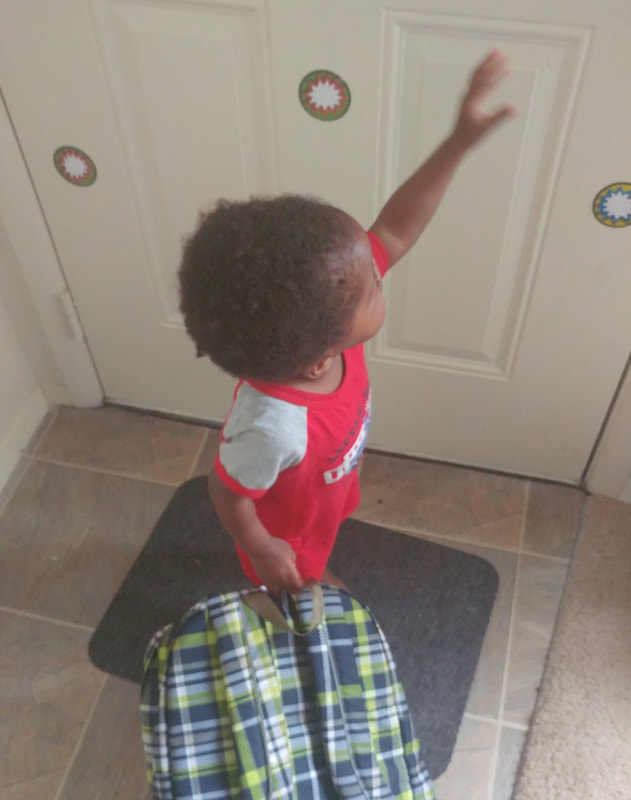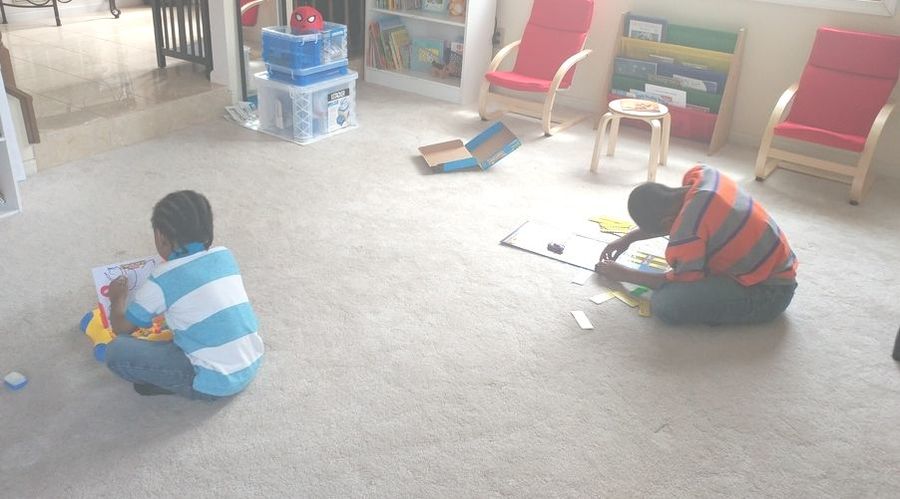|
Only may not be exactly accurate but it's pretty close.
My need to be professional is often at odds with being a 2E wife and mother. ADHD leads to grand ideas. Gifts and talents lead to recognizing where there are needs and how my abilities could meet those needs. However, the biggest lesson I've learned (re-learned?), in the past year is that the big picture must be accounted for. Provision Academy as a homeschooling center is likely at least 5 years off. In the meantime, helping and homeschooling are still of central importance to me. With a newly 2 year old and and 8 year old who is not yet reading fluently, I wanted to figure out what I could offer to serve others, that would fit our lifestyle. As children get older, we decide they must be taught. I am of two minds about this. On one hand, I believe with the right environment and tools, children will teach themselves. Children pick up things on their own all the time. On the other hand, I also believe that there are certain foundation skills that should be explicitly taught. Really, I think both are true. Regardless of where you fall on the teaching philosophy spectrum, it is important to know what makes learning effective. Good teachers know their ABC's. A is for ability. Most people will not teach multiplication to their toddlers. Or expect them to sit quietly for hours on end. We recognize that these things are beyond their ability. Children gain become independently capable of different things at different times. Many parents are concerned when their 5 or 6 year old cannot read or write well. Yet the normal range for reading development is 3 to 9. Writing fluently has a similar range. Focus and motor skills are two other areas that have varying levels of ability. A child's ability to attend, not be distracted, hold a pencil comfortably, etc... will impact their academic achievement. B is for belief. There's a popular motivational poster that says, "Your Attitude Determines Your Altitude." This is mostly true. We try and do things that we believe we can do. If a child believes they are not good at math, or not very smart, they will not try very hard. On the other hand, if they think they can, they will put forth the effort. How do we build a child's self-esteem? How do they know they can? C is for competence. Belief and competence go hand in hand. Every time a child succeeds, their self-esteem grows. As parents and teachers, it is our job to give children many, many opportunities to succeed. In order to do so, we must also let them fail. You cannot have success without failure. But failing well is an art. When our children fail, we have to teach them to figure out what went wrong. We have to see if we set them up for failure by going outside of their ability. We have to encourage their efforts so they will try again. We must give them support where needed. No child does better because they should. They do better because they are nurtured and given the chance to do so. Have you seen the ABC's work for your child?
Have you seen the effects of ignoring the ABC's? Share your experiences in the comments.  The One-Room Schoolhouse It's been a while since the last post. Our family moved the day before and it's been a whirlwind couple weeks as the students have adjusted to a new norm. One of the most common questions that I'm asked is, "How can you teach different ages and grades?" The answer is, "We figure out what works." It starts with a belief that educating a mixed age and ability group is possible. Historically, students attended a one-room schoolhouse (find reference for history). In the present day, public school teacher are often teaching to a range of 1-3 grade levels in one classroom. Many classrooms are inclusive, and while peers may be approximately the same age, there are often mixed ability levels. As a former public school educator and tutor, I know firsthand that students are often working on many different levels. Homeschooling co-ops, homeschooling families, charter schools, and other alternative education programs have all demonstrated success in teaching multi-age groups. What's Working? There are always some road bumps as students get acclimated to a new environment. So far, what is really working well for us at the Academy is: 1) Consistent routine - We have a monthly theme, a weekly theme, and a daily curriculum integration. We do 3 activities per block and we use music to transition. This accomplishes a few things. The kids know what to expect and so they feel safe. They are familiar with the songs and some of the materials. This allows them to easily participate. It also gives us a common language to describe our day. Soon, the students will have visual schedules to refer to. 2) Simple, enforceable rules - Child development experts across the board recommend using about 3-5 rules to maintain order and structure. A rule that cannot be enforced, is no rule at all. The majority of our rules involve maintain personal space and safety. Things like, keep your hands to yourself and stay in your space in your area. We have flexible seating so there's a lot of movement leeway in one's personal space. For teaching, I ask that students have a listening face in a listening space. And I explain what that looks like. 3) Working in spurts - Our blocks are typically broken down into a 10-15 minute teacher led activity, a interactive group activity, and an independent activity. Using music and movement for transitions can help keep the students calm and focused. As more students enroll, the dynamics will shift and we will find new things that work. As the students mature and regress, we will find new things that work. As I learn and grow, we will find new things that work.
We are a participant in the Amazon Services LLC Associates Program, an affiliate advertising program designed to provide a means for us to earn fees by linking to Amazon.com and affiliated sites. This program is one way to support our organization at no additional cost to you.

Change is Hard! I meant to post yesterday but I was exhausted! Provision FES Academy opened July 5th, 2017 with 2 academy students. Having been out of the teaching game for, oh... 11 years, we had a slightly bumpy ride. Our first students have been homeschooled but have not been used to a daily structure. That's quite a transition for younger students. Especially a newly 5 year old. It's also a transition for our family. One of my favorite things of being a relaxed homeschool family is rolling out of bed whenever we like. PFES Academy means we get up EARLY. It's totally worth it though. At the end of the day, both of our students said they had fun. And they learned a lot! Day 1 Highlights Mixed age is always a bit tricky. Teachers (Special Education, General Education, and Homeschool) have to get used to teaching to different abilities, especially at the elementary level. My method is to start with the basics and differentiate up. I used a deck of Alphabet Cards and had my non-reader identify letters, and my reader tell me the word. I used this as an informal assessment. They got tired after a few letters but I got a lot of information. I used a 100 chart for math. I learned my In the state of Virginia, I am licensed to teach students with emotional disturbances and learning disabilities. I have taught students who are diagnosed with anxiety, depression, bipolar disorder, gifted, ADHD, and what was formerly known as Asperger's. These are not all the diagnoses my students have received but a good sampling.
Currently, students who have some type of educational or emotional diagnosis are considered to have special needs. As an adult with special needs, something about this phrase bothers me. In my experience, everyone has special needs. I have never met anyone who was not different from the "norm" in some way. I'm fairly certain normal is a mythical creature. I do not know any normal people. If you do, please introduce me. Despite the under-representation (non-existence?) of normality, many insist that there is a standard method of learning. On this site, instead of saying special needs, disabilities, or disturbances, I will use the phrase learning differences. My goal as an educator is to understand and accommodate the unique ways that each student learns. Because we're all different. And that's okay. |
AuthorShay Malone is a development specialist. A certified teacher (emotional and learning disabilities and middle school mathematics) with a background in psychology, she has worked with children and families for over 15 years in many different capacities. She believes that emotional growth is just as important as academic achievement. Shay is an advocate for homeschooling, exceptional learners and quality education. Archives
September 2018
Categories
All
|
Telephone757-209-2095
|
|





 RSS Feed
RSS Feed
